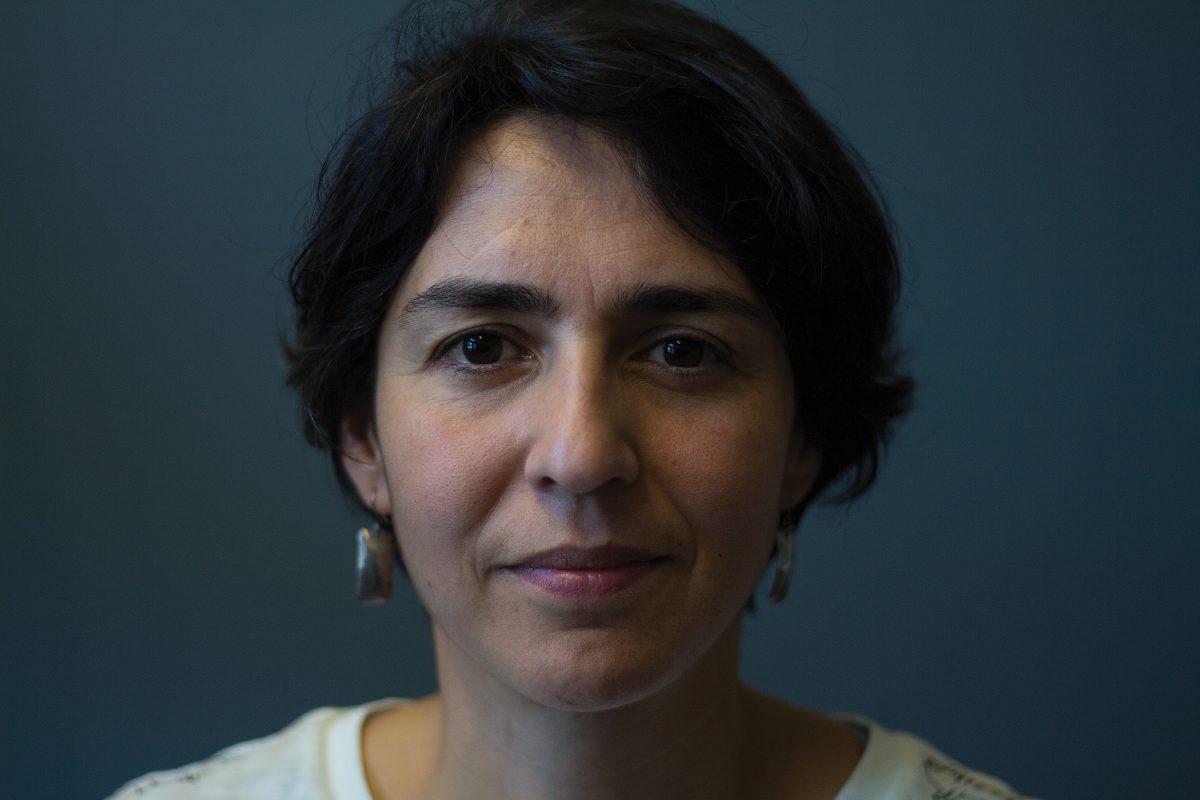Arden Butterfield’s hands move slowly and carefully toward the small, clay person sitting inside a cardboard box that’s been painted black and cut to look like the inside of a house. Butterfield adjusts the brightness of the light above him and positions his Canon G12 camera to point at the center of his homemade set.
To create the next frame of the film, he meticulously moves the clay figure’s limbs a few millimeters and presses the shutter of his camera once.
He will repeat this process more than 5,000 times before he finishes a feature stop-motion film. After drafting his plot, creating sets and characters by hand, shooting frames, editing and composing its music, Butterfield will finally finish his film, three months after he started.
Butterfield, a sophomore at Grant, has found his creative niche in stop-motion videography. But for him, filmmaking isn’t just a hobby. A self-described introvert, Butterfield uses film as an outlet for expression. “Whatever ideas or feelings that I am dealing with, I can show them through film,” he says.
Butterfield was born on Feb. 21, 2001, in Northeast Portland. He is the oldest of Cinnamon Bancroft and Andrew Butterfield’s two children. His younger brother, Tait, 11, attends Beverly Cleary School.
Growing up, Butterfield remembers the central role art played in his childhood. His father, now a ceramics teacher at Wilson High School, always had projects for his sons. “With my dad, we would do all sorts of art stuff,” Butterfield recalls. “I’ve always had an artistic side.”
Along with art, Butterfield’s parents highlighted the importance of family. Spending time together in the outdoors became a priority, and the family camped or hiked whenever they got the opportunity.
Beyond family outings, Butterfield was never very social. He was always an independent kid, his father recalls. “Arden would rather do something more individual, like exploring or hiking,” Andrew Butterfield says.
Butterfield started kindergarten at his neighborhood elementary school, Beverly Cleary but soon switched to Rigler Elementary School in second grade. He was motivated to transfer there because of the unique Spanish immersion program and because Butterfield’s mother worked at the school as the third-grade Spanish immersion teacher.
The small class size in the immersion program made it difficult for Butterfield to come in as an outsider. “I didn’t know anyone at Rigler,” Butterfield remembers. “So it was pretty hard.”
In his early years at Rigler, Butterfield attended a film class on stop-motion video. But film didn’t click for him right away. Butterfield was more interested in doodling, filling entire sketchbooks with ideas for inventions. He also began cello lessons and got involved with the Metropolitan Youth Symphony.
The summer before his sixth-grade year, Butterfield decided to attend da Vinci Arts Middle School instead of following the program’s normal path to Beaumont Middle School.
“I didn’t miss going to Rigler or being in the immersion program,” Butterfield says. “I think this was partly because of the amount of art that was at da Vinci … it comforted me.”

For Butterfield, however, middle school life was anything but simple. The pace of the schoolwork was a lot faster than he was used to. “I wasn’t very social inside or outside of school,” Butterfield says. “My sixth-grade year, I ate lunch by myself in my science teacher’s room.”
In seventh grade, Butterfield was finally able to gain his footing. He discovered that film combined all of the art mediums he loved and that he could incorporate it into his academics.
Shannon Wasson, Butterfield’s middle school Language Arts teacher, recalls how much his films had an impact on her. “He created a film that focused on the topic of order and disorder,” Wasson says. “I originally assumed that because of his quiet nature and shyness, I wasn’t going to see much. I was very wrong.”
At the start of his eighth-grade year, Butterfield attended a show at the Portland Art Museum and was amazed by the work of John Frame, a California film artist. Butterfield says that seeing his work was a “formative moment” that propelled his love for filmmaking.
At da Vinci, every eighth-grade student is required to create a “capstone” project – to choose a medium of art and create a piece of work for it. Butterfield, inspired by the art of Frame, decided to emulate his work with an animated film. “I’ve always been passionate about academics, but I think that kind of ignited combining academics with art,” he says.
When the time came for Butterfield to make his transition to Grant, the process was relatively smooth. But he felt the artistic options specifically regarding film were limited at Grant, and with mounds of homework, he struggled to find time outside of school to make videos.
“I discovered that Grant had almost no opportunities to expand my skills in film,” Butterfield says. “Which made it hard for me to find time to keep my involvement.”
In a new environment without film, Butterfield says he was nervous. His freshman English teacher, Dylan Leeman, remembers how he started in class and wanted to make sure all his students felt comfortable.
At Grant, freshmen are put into communities of kids who share the same core classes. As the year progressed, Butterfield valued this environment because it allowed him to get to know a small group of people. The Grant communities mirrored the sizes of his middle school classes, which comforted him. Being able to see the same faces in each class and build relationships with the same kids softened the transition.
Once Butterfield found a way to integrate his filmmaking talent into the classroom, he began to flourish. “I would ask the teacher about normal projects, if I could do something film related instead,” he says. “In freshman year, I eventually made a couple films that I turned in to my teachers.”
Leeman noticed a change in Butterfield after he was able to include films and creativity in his learning frame. “Once he finished a couple films and podcast projects in my class, I could see that he was really taking off,” Leeman says. “He became the kid that would always push the limits of the project, or bring in articles contradicting what I was teaching. I really enjoyed having him in class.”
Although Butterfield was now more social within school, he still stayed independent outside of class and didn’t spend time with his peers anywhere but within Grant. That worked fine for him.
When summer rolled around, Butterfield spent a lot of his time working as a lifeguard at Dishman and Grant pools. But it didn’t slow the time he invested in his art. He began working on an animated film titled “Strings,” which would take him almost the full three months of summer vacation to complete.
Completely stop-motion, the video was a compilation of thousands of individual photos. The entire production was designed and created by Butterfield: he hand-constructed the set, composed and recorded his own musical score, perfected the lighting and edited the film himself.
“The hardest part of the project was making the man in the film.” Butterfield says. “I first made a small clay head and painted the details, and then I had to bend and sculpt a thin metal frame to hold the cloth robes.”
“I’d say he put in about three hours a day on it,” Butterfield’s father recalls. “Whenever there was a nice and quiet, kind of meditative time during the day, he would break away from everyone. It wasn’t all the time, but he definitely kept at it. That’s how he’s been his whole life, you know. He always keeps at it.”
All of Butterfield’s hard work paid off at the end of the summer when he entered his film into Fresh Film Northwest, a juried film competition put on by the Northwest Film Center. Out of more than 130 submissions from teen filmmakers living in Alaska, British Columbia, Idaho, Montana, Oregon and Washington, Butterfield’s film was one of 13 finalists.
Now, Butterfield is determined to continue exploring his passion. He’s making new videos and short films for his teachers and is creating new movies outside of school.
Although film remains his favorite medium, Butterfield hasn’t shied away from exploring new forms of art. He is a writer for the Young Composers Project, and he plays improv piano.

Although Butterfield plans to continue submitting films in competitions, he is unsure about his future after high school. “I don’t know if I would be able to get a job as a filmmaker,” Butterfield says. “It feels like kind of a risky field to go into.”
On a recent day after school, Butterfield sits with his cello, rehearsing a new piece for the Metropolitan Youth Symphony. After finishing, he practices piano and completes his homework.
Finally, after hours of work, Butterfield gets back to his film about the Rule of 110, a mathematical system that can be used to simulate a computer program. It’s different than his usual stop-motion videos, but it expresses his ideas just the same.
Butterfield still doesn’t meet up with friends outside of school very often, but it’s not much of a concern for him. “I am an individual person. I always have been,” he says.
His focus, instead, is on film. “It takes everything that I love and brings it together into one thing,” Butterfield says. “It’s pretty amazing.” ◆







































